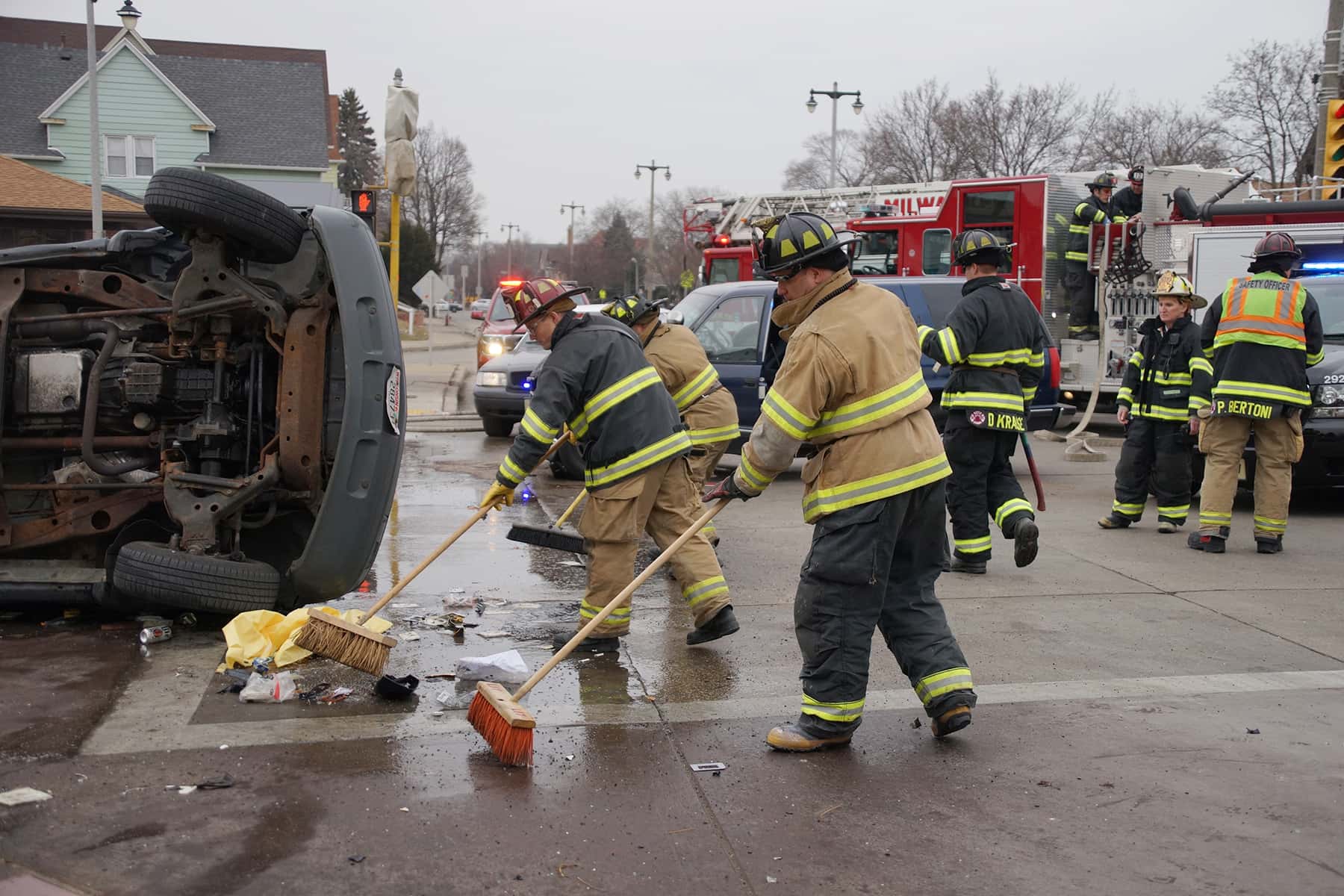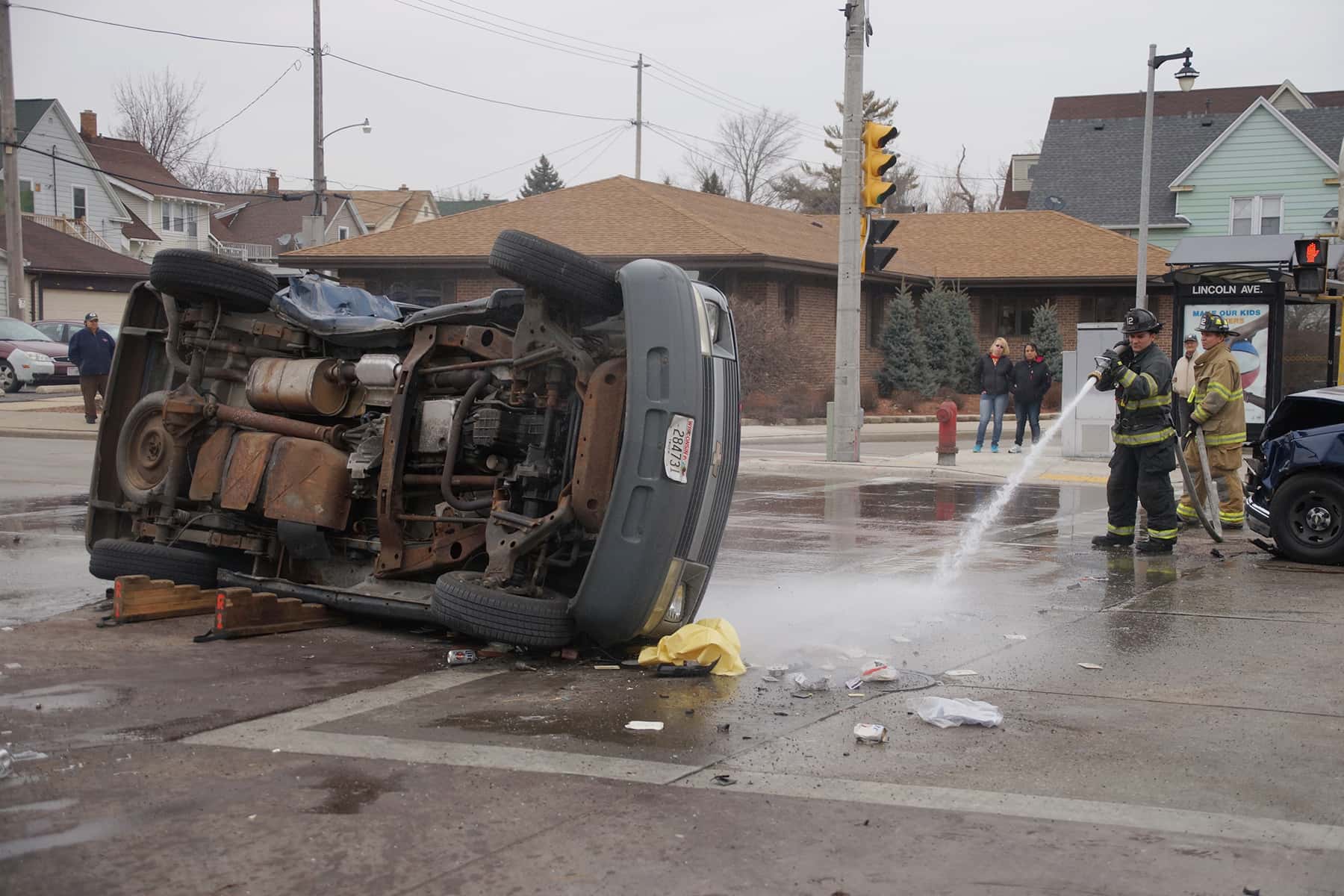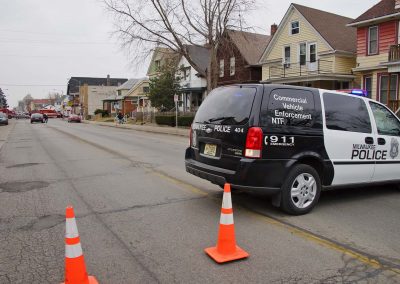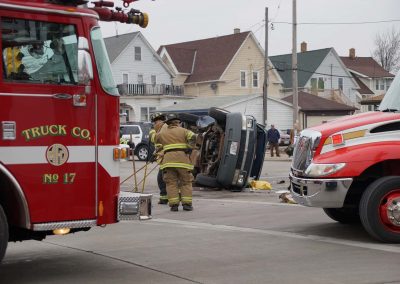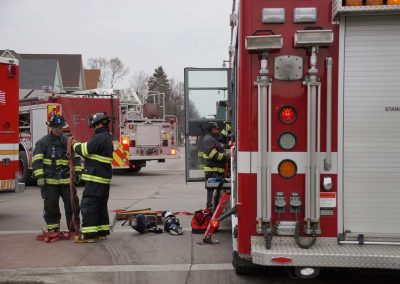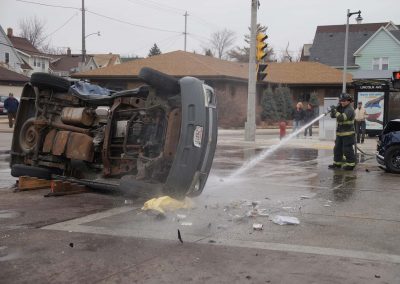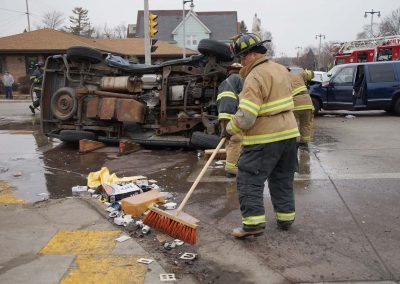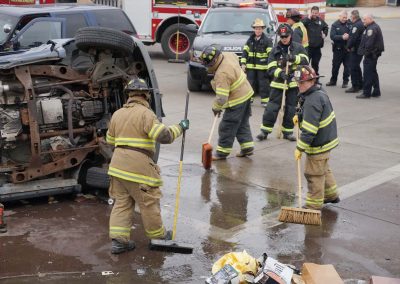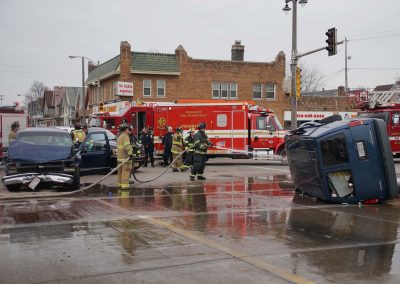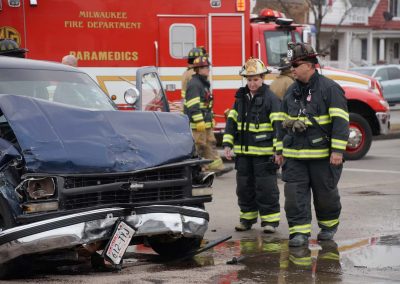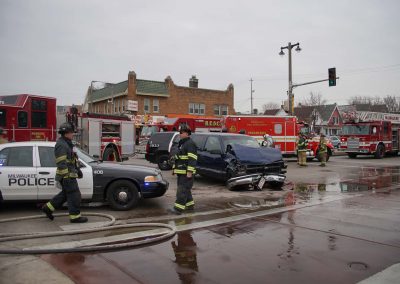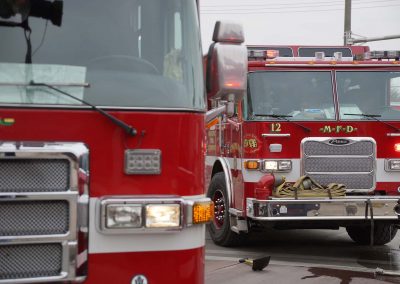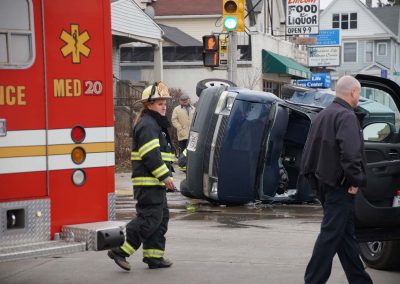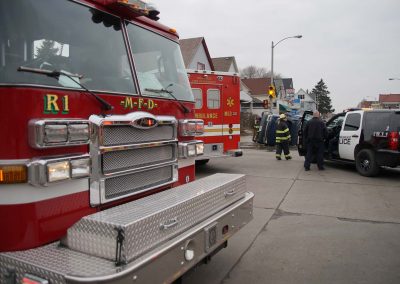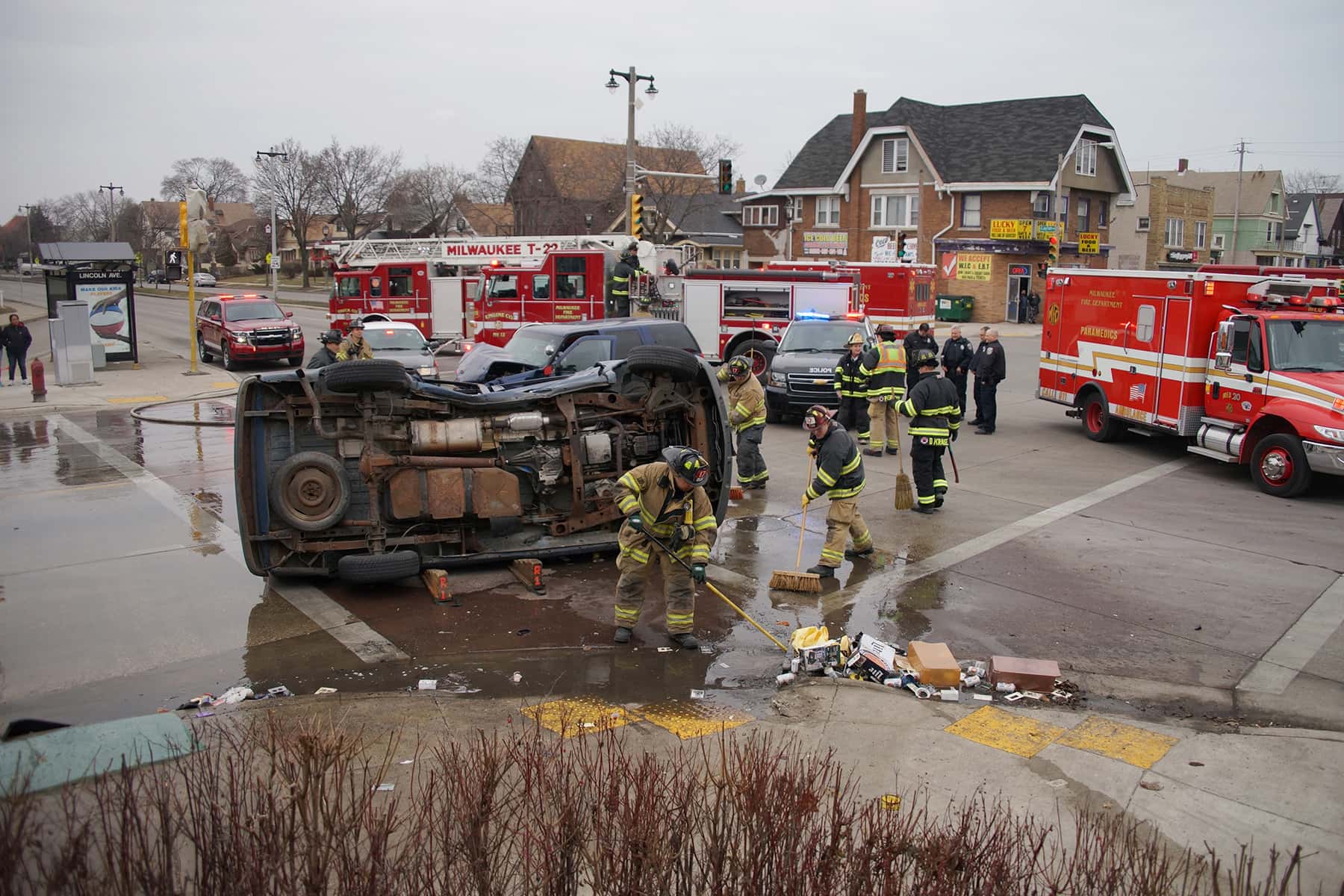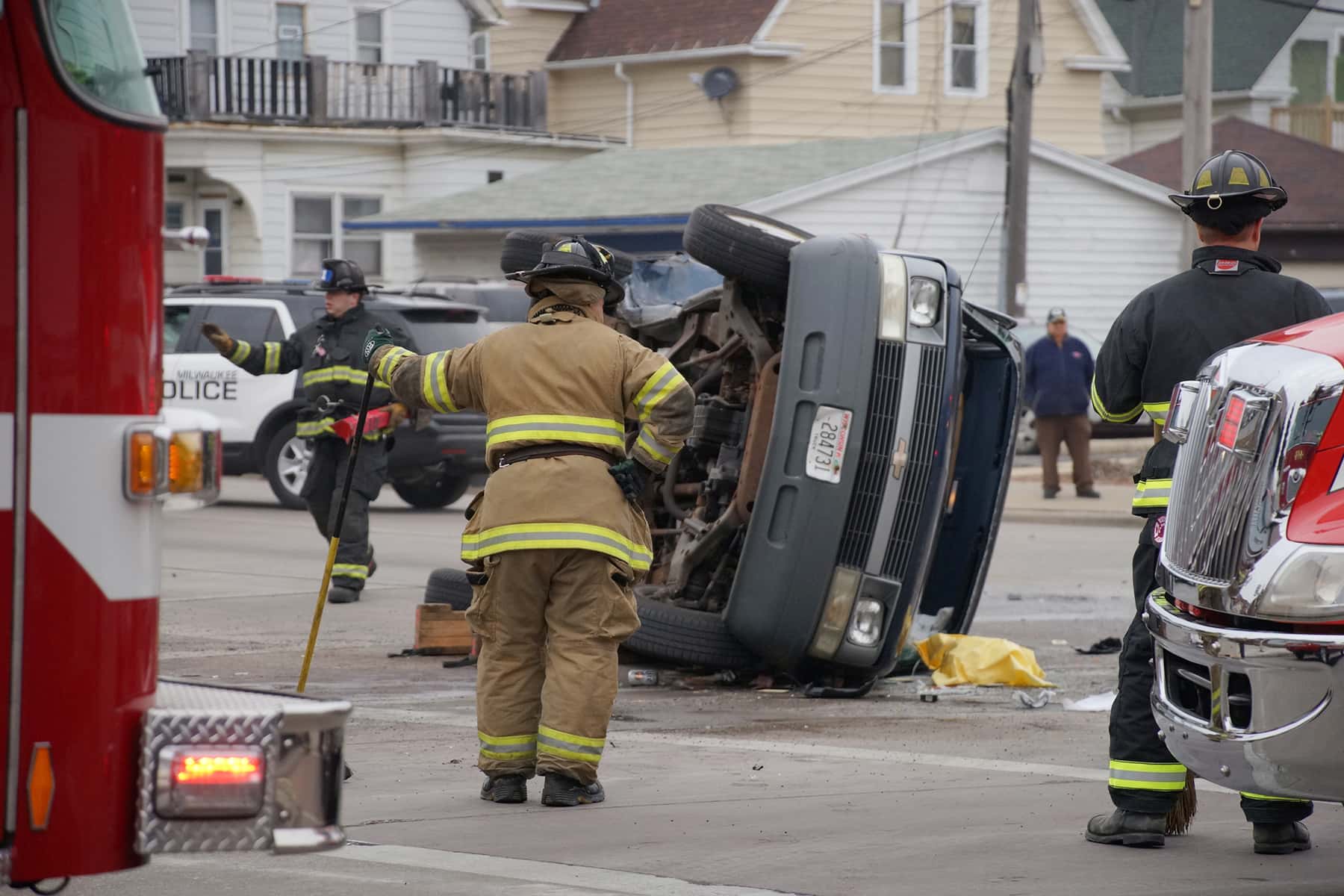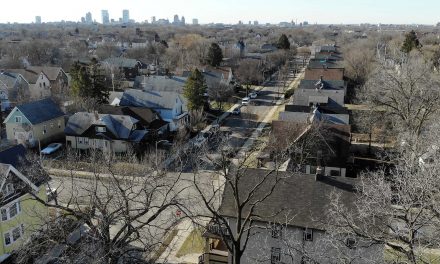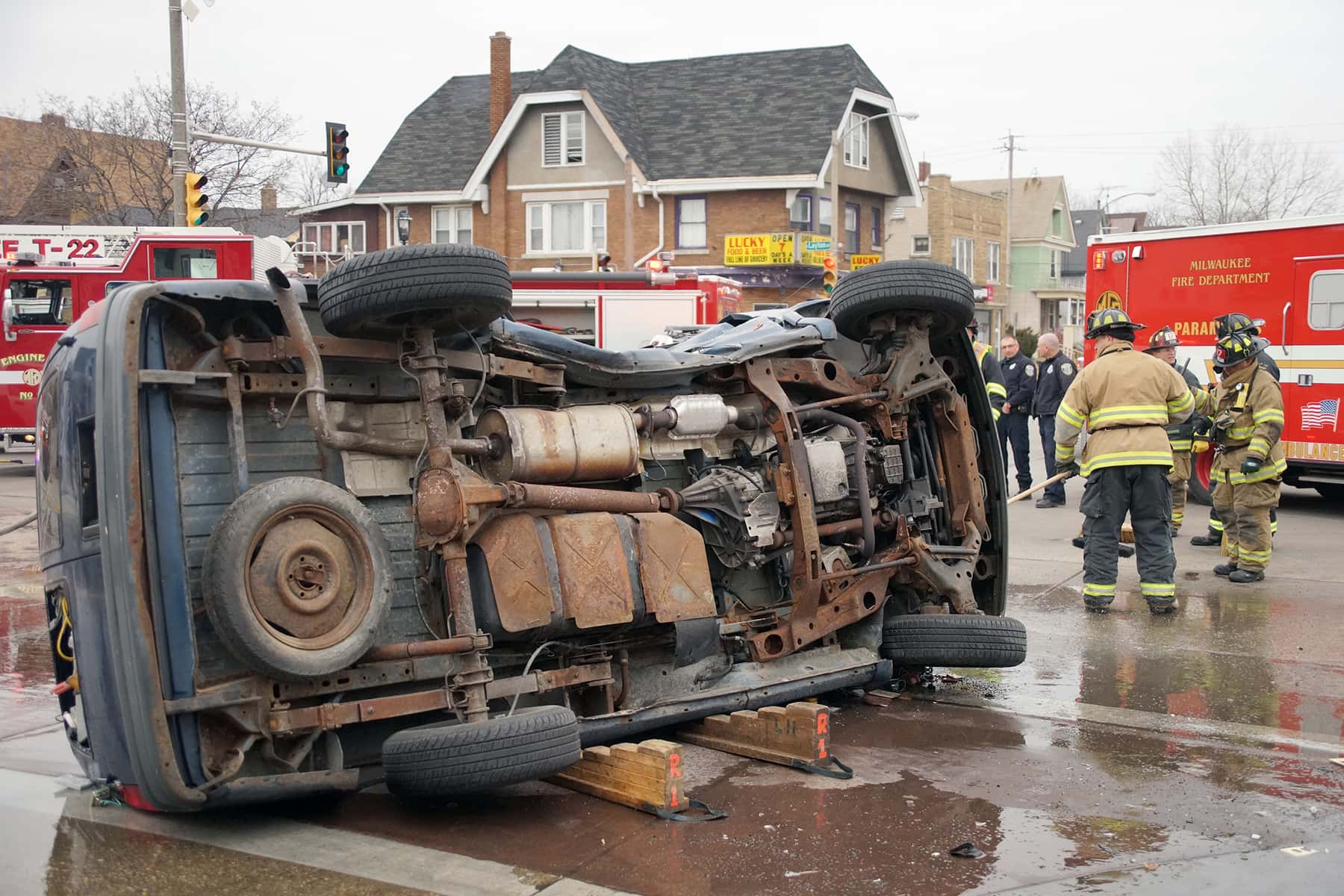
“We moved to the areas where we have the highest incidents of bad driving and without giving out too much information, we really hit those areas hard.” – Ray Banks, Milwaukee Police Assistant Chief
For years my wife and I had a running joke that whenever we returned to Milwaukee from an out-of-town trip we were guaranteed to see someone doing something stupid within five minutes of being back in town. Invariably it was true. In most instances it was related to someone driving. Little did we know that this inside joke would reflect the trend we see, without leaving the city, as while traveling around the metro area today.
It seems that more reckless driving is happening than at anytime I can remember. Each conversation I have about the topic, I find that my experiences mirrors those of everyone I talk to. The excessive speeding, passing from the right lane, running stop signs and red lights, and weaving in and out of traffic, among other things, has become the norm for far too many drivers, young and old alike. This has lead to a growing number of terrible accidents, many of them fatal, in the past several years.
We have all wondered what caused so many drivers to abandon the environment of safety that driving rules were created for. And more importantly, what the solutions are to this recklessness.
Just a few weeks ago I saw a ribbon of yellow police tape and what appeared to be debris in the middle of the street on Burleigh near 44th. I parked my car and went over to get a closer look. I saw the remains of what was once a motorcycle. Parts of the motorcycle were strewn all across the street and people at the scene told me they believed the rider had been killed by a hit-and-run driver.
Just a short number of days later I heard the unbelievable story of a 3 year-old girl who had been shot and killed after a road rage incident, only about six blocks from where the motorcyclist had been killed. Each of these tragedies happened within a few weeks of where off duty police officer Kou Her was killed by an alleged drunk driver who ran a red light. In June, Milwaukee Police Officer Charles Irvine Jr. was killed while in pursuit of a reckless driver. It has been a difficult stretch for our entire community.
Sometimes alert drivers who are able to steer clear of reckless drivers avert these tragedies. Just the other day my wife and I witnessed a driver plow through a red light at high speed on Port Washington Road and Silver Spring, just barely missing a pick up truck that was making a left hand turn. Fortunately the driver of the truck slammed on his brakes quickly enough to avoid a collision.
Almost two years ago we were nearly killed by a speeder who ran a light on Villard. Had I not seen him in my peripheral vision and blew my horn to alert him, as well as slamming on my brakes to stop in time, I am sure that at the speed he was traveling he would have killed us both. This happened just a month or so before I was T-boned by a woman who ran a red light on Hampton and Port Washington Road while lighting a cigarette. I survived with fairly minor injuries but my car was totaled. Earlier this spring my wife’s car was sideswiped while parked in front of our house. The damage totaled her car as well.
The law enforcement response this summer and last year has been similar. The Milwaukee Police Department (MPD), Milwaukee County Sheriff’s Department, and Wisconsin State Patrol have teamed up to combat the reckless driving epidemic. They have set up saturation patrols in the areas most impacted.
According to Milwaukee County Sheriff Earnell Lucas, “Our community knows that it’s necessary and it’s needed, because the recklessness that is in our streets is unacceptable.”
Beginning in May of this year the three agencies have concentrated their efforts on areas they consider hot spots on the north and south sides of the city. Despite these efforts, I have seen little change in driving habits. I am not sure people are slowing down much. I still have people passing me by daily, going well over the speed limit. I have drivers riding my bumper, attempting to make me move out of their way regularly. Not a day goes by that I do not see multiple people run red lights and drive through stop signs as if they are not there.
No one seems to have a reason or clear rationale for why so many people are driving like maniacs. I have heard some say it is these young people who are stealing cars and joyriding. But many of the speeders I notice do not appear to be just young people. Some have told me it is “these people with no license and no insurance.” I do not know how you would be able to prove this, except in the cases where people are pulled over by the police department. Are people simply irresponsible and unconcerned about traffic laws all of a sudden?
What changed in Milwaukee to perpetuate this behavior by so many drivers? I have travelled around the country quite a bit the past few years, in Texas, New York, Illinois, Ohio, North Carolina, South Carolina and Minnesota. I have seen nothing like what I witness in Milwaukee. It seems as if there is no respect for the law and not much fear of being caught by large numbers of drivers. I have seen it on the north side, the south side, the east side, west side and in the suburbs as well.
According to the 2018 City of Milwaukee Fire and Police Commission Vehicle Pursuit Report there were “940 vehicle pursuits in 2018, a 155% increase from the previous year and the most pursuits engaged in by the MPD since at least 2002.” Under current MPD SOP (Standard Operating Procedure) 660:
- The occupant(s) has committed, is committing, or is about to commit a violent felony (e.g., armed robbery, recklessly endangering safety, and other crimes against a person in which violence is an element to the felony offense); or
- The specific vehicle was used in or taken during the attempt or commission of a violent felony (e.g., armed robbery, recklessly endangering safety, and other crimes against a person in which violence is an element to the felony offense); or
- The vehicle or occupant(s) present a clear and immediate threat to the safety of others and therefore the necessity of immediate apprehension outweighs the level of danger created by the vehicle pursuit (e.g., misdemeanor shots fired incident in which a specific vehicle is described as being involved); or
- The occupant(s) of the vehicle are engaged in drug dealing proximate in time to the initiation of the vehicle pursuit.
- The necessity of immediate apprehension outweighs the level of danger created by the vehicle pursuit, as in the case of the vehicle engaging in reckless driving.
- A “refusal to stop” pursuit, as previously defined within this policy, may be initiated and maintained for a lesser offense than described above.
According to the report, “Vehicle pursuits initiated before March of 2010 were under the guidance of a previous version of SOP 660 which stated that vehicle pursuits were authorized only when the law enforcement officer knew or had reasonable grounds to believe that:
- The suspect presents a clear and immediate threat to the safety of others;
- The suspect has committed or is attempting to commit a serious offense; or
- The necessity of immediate apprehension outweighs the level of danger created by the vehicle pursuit, as in the case of a serious traffic violation such as OWI, reckless driving, etc.
A new policy was put in place in March 2010, after a number of fatalities following pursuits requiring “that an officer must have probable cause that a violent felony has occurred or is about to occur instead of reasonable suspicion that a suspect has committed or is attempting to commit a serious offense.” In June 2015, due to a large number of vehicles being stolen in carjackings, the policy was revised again. “This policy change expanded permitted pursuits beyond persons involved in certain crimes to also include the vehicles involved in those crimes.”
Another revision took place in September 2017, “wherein the categories of permitted vehicle pursuits were again expanded. These revisions were undertaken in an effort to address growing community concerns surrounding reckless driving and vehicle-based drug dealing.”
Of the 940 pursuits in 2018 nearly 72% were initiated between 5:00 PM and 1:00 AM. 703 (74.8%) lasted less than 5 minutes, while the longest pursuit lasted 98 minutes. October had the largest number of pursuits at 105, and only 42 occurred during February – the lowest monthly total. District Five had the most pursuits with 284, followed by 183 in District 7. Only 18 occurred in District 1. 491 of these pursuits exceeded 75 mph (52.2%). Nearly 67% were initiated by reckless driving. 29.8% of all vehicle pursuits were of vehicles identified as stolen. 240 pursuits resulted in an accident, and 163 resulted in injures. Only 37.8% resulted in subject apprehension. 353 ended with the officers terminating the pursuit and 218 times the violator simply escaped. 165 times the violator crashed and 131 ended with the violator stopped. The “median age of known pursuit subjects was 20 and the average age was 21.7,” according to the report.
I believe that in addition to these young people simply deciding to drive recklessly and play chicken with the police, there was a major shift that took place in 2004 that has been a factor in the overall reckless driving that we see in Milwaukee. Wisconsin discontinued state school aid for driver’s education in 2004. Because most companies teaching young people to drive now cost $300 to $400, poor kids cannot afford to learn to drive properly.
Lois Quinn and John Pawasarat, formerly of the University of Wisconsin-Milwaukee’s Employment & Training Institute, studied the problem and discovered massive disparities in driver’s license possession. In a 2015 study they found just 14% of 18-year-olds in Milwaukee County’s poorest neighborhoods have a driver’s license, compared to 74% of 18-year-olds in the County’s richest ZIP codes.
“That’s why you see hardly any kids in 53206 with licenses, while kids in 53217 get them when they turn 16,” Quinn told the Milwaukee Journal Sentinel in 2017.
Milwaukee Youth Services for Wisconsin Community Services received a grant from the Greater Milwaukee Foundation in 2014, after winning the Greater Together Challenge. They partnered with Milwaukee Public Schools (MPS) to re-start free drivers education in the district, and the United Way assisted in funding the program for 257 students at four high schools. About 1,400 students took the free training between 2016 and 2017. The district covered most of the cost. Less than 2,500 students were expected to participate in the 2017-2018 school year. Under the MPS Drive program, for a $35 registration fee the students would receive 30 hours of classroom instruction, 6 hours of driving instruction, and 6 hours of observation.
It is great that a small number of students will be able to access this free training, but most will not. The gap from 2004 until 2016 results in the type of drivers we see too often today. Those 15 to 17 year-olds from that window of time are now 19-30 year olds. Many of them missed receiving formal drivers education training. They do not have the understanding of the hazards of speeding, driving erratically, or not wearing seat belts in the way that they would have had they been taught properly in classes.
That does not account for the older drivers, or the ones that would have not taken the classes even if they were available. Far too many drivers have fallen into the monkey see monkey do syndrome. As more drivers flaunt the law, others have jumped on the bandwagon and followed along. Despite the multiple high profile deaths related to reckless driving, we still see people driving like maniacs everyday.
There is only so much law enforcement can do. For far too long the Milwaukee Police Department allowed officers to pull drivers over with no probable cause, according to information related to the Department of Justice (DOJ) investigation of MPD and the lawsuit filed by the ACLU for unwarranted vehicle and pedestrian stops. As detailed by the ACLU, “between 2007 and 2015, the department almost tripled their traffic and pedestrian stops, from around 66,000 to around 196,000.”
“The Milwaukee Police Department’s unlawful stop-and-frisk program has caused the City’s black and Latino communities to feel alienated from the police, damaging the trust between police and the public central to achieving public safety.” – ACLU
The American Civil Liberties Union, the ACLU of Wisconsin, and the law firm of Covington & Burling LLP filed a class-action lawsuit, Collins v. Milwaukee, to challenge the targeting of “tens of thousands of people without reasonable suspicion of criminal activity.”
Attorney Margo Frasier is one of the researchers who analyzed the data from MPD records and found “48% of traffic stops and 59% of pedestrian stops failed to show that MPD officers had individualized, objective, and articulable reasonable suspicion of criminal activity or vehicle equipment violation,” from 2010 to 2017. Of the 653,043 traffic stops, she found that nearly half were not legally justified (304,971).
“I find that MPD officers face significant pressure from supervisors and command staff to conduct large numbers of traffic and pedestrian stops and that, over time, this pressure has developed into an informal quota system.” – Margo Frasier
What appears to have been an informal quota system required officers to conduct at least two traffic stops per day and “for those that did not comply, they could expect progressive discipline up to and including termination,” according to a letter from Michael V. Crivello, President, Milwaukee Police Association to the Fire and Police Commission. Officers were allegedly forced by order of their superiors to break state law. The public was unaware of this policy but certainly felt its impact, especially in the black and Latino communities.
On July 23, 2017 the parties reached a settlement agreement approved by the Police Department, Common Council, and Mayor Tom Barrett. The U.S. District Court for the Eastern District of Wisconsin entered an order adopting it. The settlement forced the department to change its patterns and practices in pedestrian and traffic stops, and keep detailed records of the reasons for every stop. The step was designed to alleviate racial profiling and to be transparent in sharing the information with the public.
In many respects, years of racial profiling in traffic stops led blacks and Latinos in Milwaukee to distrust the police department. We knew that this profiling occurred because we experienced it and witnessed it daily. Had the police department allowed its officers to treat people fairly, instead of abusing its power by forcing officers to pull people over to meet what the officers felt was a daily quota, the level of distrust would be different.
Some have blamed the police pursuit policy changes for the reckless driving. I think that is theory is wrong, because the issue is much more nuanced than being the result of a single factor. Far too many young people are stealing cars, although according to an officer that I spoke to off the record, the number committing most of these thefts is fairly small. We are dealing with people around the metro area who are choosing to violate these laws more and more. It is certainly not only an issue within the confines of the City of Milwaukee.
I do not have the solution. I think the law enforcement agencies, working to saturate areas of concern, may be seen by some as racial profiling. Some residents I have spoken to say they do not care, as long as their driving around the city ceased to be a terrifying journey. Regardless of what happens moving forward, we must be vigilant in speaking up to those we know personally who are a public menace as drivers. I am afraid to drive now. At one time I loved to drive, but not anymore.
Defensive driving was once enough to prevent many accidents. Now it is barely adequate because of the unorthodox nature of the recklessness. People are doing things that are so stupid behind the wheel that it is hard to believe even when personally witnessing it happen. I recently saw a driver sitting at a red light, directly in front of a police van, make a U-turn while the light was red. They were so unaware of their surroundings and so accustomed to doing this that it appeared to be second nature for them. The officers were probably shocked that someone would do something as blatant as that while sitting right in front of them.
The number of distracted drivers who cannot seem to detach themselves from their cell phones also has led some states to make it illegal to even touch a phone while driving. Reckless driving, combined with inattentive driving, has become a truly a toxic mixture.
My fear is that far too many more innocent lives will be lost before people across Milwaukee come to their senses and make the effort to drive safely again.
© Photo
Lee Matz

